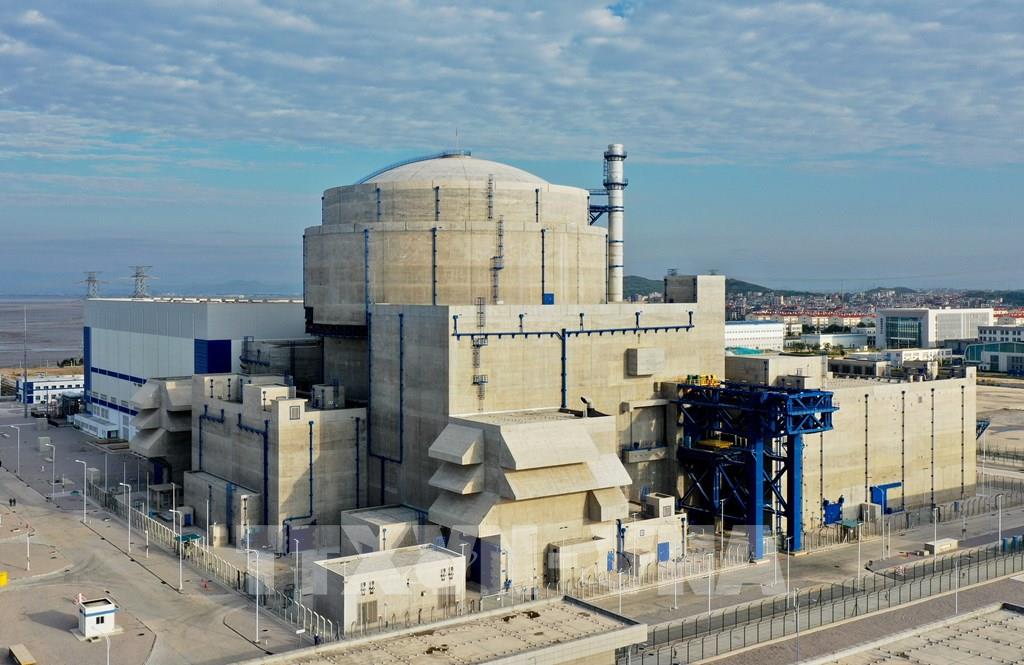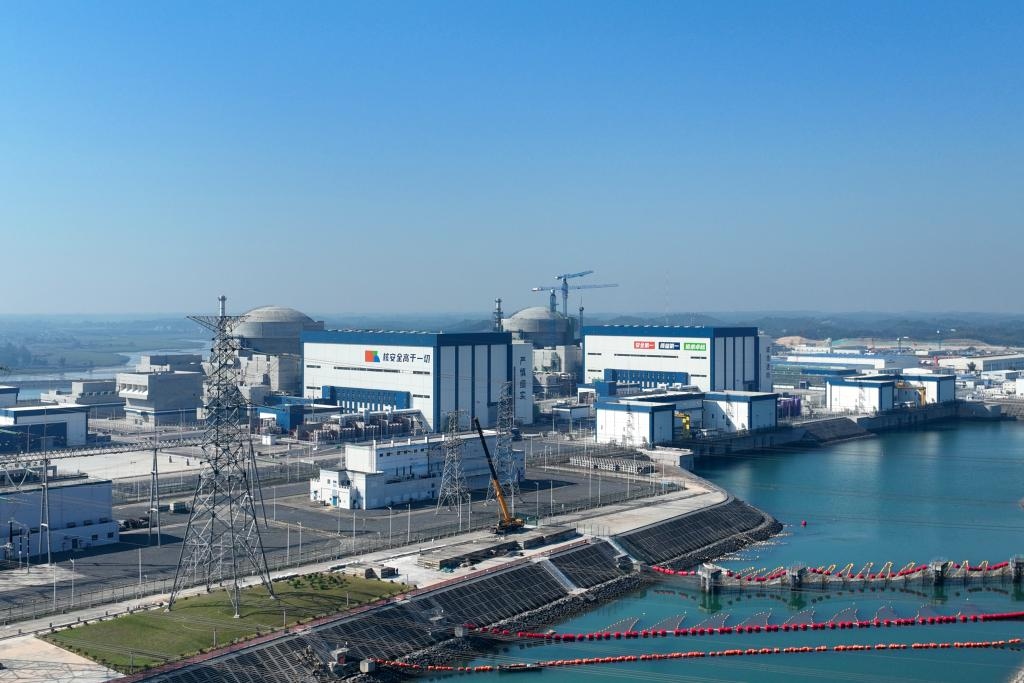China is one of the world's fastest growing economies , leading to a surge in energy demand for industrial production and consumption. China has become the country with the world's largest installed nuclear power capacity in recent years, a development that reflects a variety of factors in the country's energy, economic and environmental policies.
 Reactor at the Fuqing nuclear power plant in Fujian province, China. Photo: THX/TTXVN
Reactor at the Fuqing nuclear power plant in Fujian province, China. Photo: THX/TTXVN
According to a reporter in China, China's energy structure continues to be optimized, and green and low-carbon transition has made positive progress, and it has entered the path of energy transformation that suits national conditions, adapts to global development trends, and meets the requirements of the times. Bai Yunsheng, a member of the Strategic Advisory Committee of China National Nuclear Corporation, said that in the process of low-carbon energy transformation, nuclear energy is now a realistic option that can achieve large-scale development and support low-carbon transformation at low cost.
The world cannot achieve carbon neutrality without the contribution of nuclear energy. According to statistics, in 2023, global nuclear power output will reach 2,700 billion kWh, accounting for about 9% of the world's total electricity output, accounting for 23% of the world's low-carbon power output. From 1971 to 2023, global nuclear power generation has contributed to reducing about 70 billion tons of carbon dioxide emissions. In China, in 2023, the country's clean energy electricity output reached about 3,100 billion kWh, of which nuclear power reached 430 billion kWh, accounting for more than 13%. In addition, in power load center areas such as Guangdong, Zhejiang, Fujian, etc., the nuclear power generation rate has reached nearly or exceeded 20%, effectively promoting the role of nuclear power in ensuring electricity supply, supporting the power grid and reducing carbon emissions. Up to now, the total number of nuclear power units put into operation and under construction nationwide has reached 102 units. Of which, the capacity of the units put into operation reached 58.08 million kW; The capacity of units under construction reached 55.05 million kW, ranking first in the world in terms of the number of units put into operation and the number of units under installation. The construction of nuclear power units in China is progressing steadily. In 2023, the country approved 5 new nuclear power projects and started construction of 5 new nuclear power units. In recent years, the country's nuclear power output has been increasing continuously and reached more than 433 billion kilowatt hours in 2023, ranking second in the world. This figure is equivalent to a reduction of more than 130 million tons of standard coal consumption. From the above data and information, it can be seen that China is achieving rapid development in the field of nuclear power, not only leading the world in terms of installed capacity, but also playing an important role in technological innovation and clean energy supply.
China's nuclear power projects with completely independent intellectual property rights, typically the "Hualong 1" and "Guohe 1" high-temperature gas-cooled reactors, have become a leap forward in promoting the upgrading of nuclear energy technology, helping the country's high-tech strategy achieve leading breakthroughs; they are an important force that helps the country transform from a major nuclear energy country to a nuclear power.
China has pledged to reduce greenhouse gas emissions and pursue sustainable development. Nuclear power is an important part of this strategy as it helps reduce dependence on fossil fuels. The Chinese
government has set specific targets for nuclear power development, including building new plants and increasing the capacity of existing plants.



 Reactor at the Fuqing nuclear power plant in Fujian province, China. Photo: THX/TTXVN
Reactor at the Fuqing nuclear power plant in Fujian province, China. Photo: THX/TTXVN![[Photo] General Secretary To Lam receives Chief of the Central Office of the Lao People's Revolutionary Party](https://vphoto.vietnam.vn/thumb/1200x675/vietnam/resource/IMAGE/2025/5/30/140435f4b39d4599a3d17975dfb444c5)


![[Photo] National Conference "100 years of Vietnamese Revolutionary Press accompanying the glorious cause of the Party and the nation"](https://vphoto.vietnam.vn/thumb/1200x675/vietnam/resource/IMAGE/2025/5/30/1cf6cd5c8a934ebfa347028dcb08358c)
![[Photo] Journalists moved to tears at the Memorial Service for the soldiers who died in Gac Ma](https://vphoto.vietnam.vn/thumb/1200x675/vietnam/resource/IMAGE/2025/5/30/9454613a55c54c16bf8c0efa51883456)
![[Photo] A delegation of 100 journalists from the Vietnam Journalists Association visits the soldiers and people of Truong Sa island district.](https://vphoto.vietnam.vn/thumb/1200x675/vietnam/resource/IMAGE/2025/5/30/0984a986227d4e988177f560d2e1563e)



















































































Comment (0)